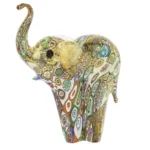When you hear the term The Gugg, you’re stepping into a world of artistic brilliance and architectural wonder. Commonly referring to the Guggenheim Museum, The Gugg is not just a name—it’s a cultural phenomenon. It symbolizes the intersection of creativity, design, and contemporary thinking. For many, The Gugg is more than a museum—it’s an experience that leaves a lasting impression.
The Origins of The Gugg: A Vision Ahead of Its Time
The concept of The Gugg originated with philanthropist Solomon R. Guggenheim, who believed in the power of modern art to transform society. His passion led to the establishment of a museum that would defy traditional norms. In 1943, he commissioned Frank Lloyd Wright, one of America’s most visionary architects, to create a museum unlike any other.
The result? A spiraling structure that resembled a nautilus shell—a design that shocked traditionalists and thrilled modernists. When The Gugg opened in New York in 1959, it was already a legend in the making.
Architectural Brilliance: The Gugg as a Structural Icon
Frank Lloyd Wright’s architectural blueprint for The Gugg was nothing short of revolutionary. The building breaks away from the rigid, box-like designs of most galleries. Instead, it introduces a continuous ramp spiraling upward, guiding visitors through a seamless art journey.
The fluid shape of The Gugg challenges the way we move through space. It encourages visitors to not only view art but to experience it in motion. This combination of form and function makes one of the most recognized museums in the world.
The Gugg’s Expanding Legacy
1. Global Branches and Cultural Influence
While New York is the home of The Gugg, its influence extends far beyond the United States. The Guggenheim Foundation has created sister museums across the globe:
-
Guggenheim Bilbao in Spain revolutionized urban development through cultural investment.
-
Peggy Guggenheim Collection in Venice offers an intimate view of European and American modern art.
-
Guggenheim Abu Dhabi (in development) aims to bridge global and Middle Eastern art narratives.
Each branch adapts the spirit to its location, blending local heritage with international vision.
2. Curated Experiences and Modern Art
The Gugg is known for showcasing thought-provoking exhibitions that reflect social issues, history, and futuristic themes. Its curators are renowned for creating exhibitions that challenge norms and expand artistic dialogue.
You won’t just find canvases and sculptures here—you’ll encounter immersive installations, digital art, and multidisciplinary projects that break artistic boundaries.
Visiting The Gugg: What You Can Expect
1. A Journey, Not Just a Tour
Walking into The Gugg is unlike stepping into any other museum. The architecture naturally leads you through its levels, with artwork thoughtfully placed along a spiral walkway. Each section flows into the next, creating a narrative that unfolds as you ascend.
2. Interactive and Educational Opportunities
Beyond its exhibits, The Gugg offers interactive programs for all age groups. From artist talks and film screenings to children’s workshops and guided tours, there’s always an opportunity to deepen your understanding of contemporary art.
3. Virtual Access for a Global Audience
Recognizing the global interest in art, The Gugg has launched robust online platforms. These include virtual tours, digital archives, and online lectures that bring art lovers closer to the museum without geographic limitations.
The Gugg in Pop Culture and Media
The Gugg has appeared in movies, TV series, and music videos due to its iconic appearance. Films like Men in Black and shows like Sex and the City have featured the museum, giving it even greater exposure. Its spiral ramp and modernist flair make it a favorite backdrop for creative storytelling and fashion editorials alike.
Why The Gugg Matters Today
In today’s fast-paced digital world, art remains a crucial medium for expression and reflection. The plays an important role by providing a space where people from different walks of life can connect with powerful ideas through visual storytelling.
Its exhibits often address issues like climate change, technology, identity, and politics. Through these works, The Gugg fosters critical thinking and promotes empathy—two things the world can always use more of.
Behind the Scenes: Who Powers The Gugg?
The Guggenheim Foundation ensures that The Gugg continues to thrive. A dedicated team of curators, educators, archivists, and innovators work tirelessly to maintain the museum’s relevance and appeal. The foundation not only preserves history but also propels forward-thinking artistic projects.
Supporters and donors from across the globe contribute to success. Their investments help launch new exhibits, educational programs, and international collaborations.
Planning Your Visit to The Gugg
If you’re planning a trip to The Gugg, here are some helpful tips:
-
Book tickets online to avoid lines, especially on weekends.
-
Join a guided tour for deeper insight into current exhibitions and the museum’s history.
-
Stop by the café for a quick bite, and don’t forget to check out the museum shop for unique souvenirs.
The museum is wheelchair-accessible and offers multilingual support, making it a welcoming space for global visitors.
Conclusion: The Gugg as a Cultural Beacon
The Gugg isn’t just a place to look at art—it’s a place to feel it. Whether you’re an artist, a student, a traveler, or simply curious, the museum invites you to explore creativity in all its forms. From its daring architecture to its cutting-edge exhibits, The Gugg continues to push boundaries and redefine what a museum can be.
In a world where technology and tradition often clash, stands tall as a harmonious blend of history and innovation—a true treasure for generations past, present, and future.






